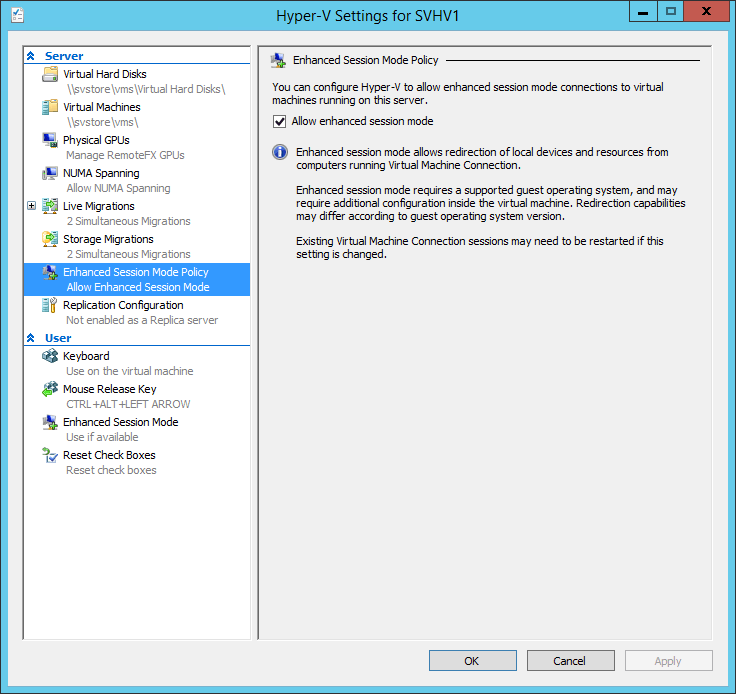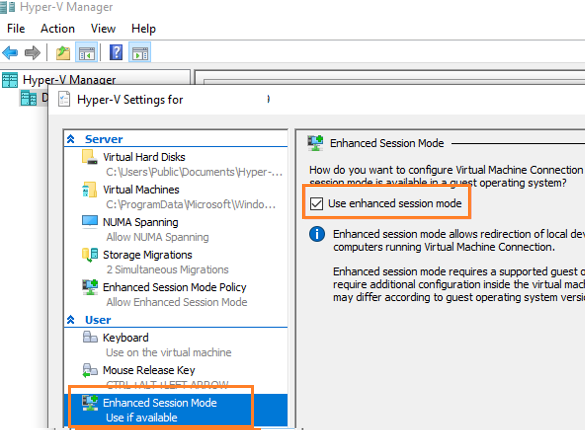

If you have network access, or can use the Enhanced Session Mode, you are probably fine… but my Hyper-V host is on an isolated network and I can not use the Enhanced Session Mode since my guests mainly consist of Windows 2008 R2 Servers. The Enhanced Session mode connection uses a RD session via the virtual machine bus (VMBus) and does need a network connection. There has been an update for Hyper-V called “Enhanced Session Mode” but its only available if your host is a Windows Server 2012 R2 and your guest is either a Windows Server 2012 R2 or a Windows 8.1. Unlike VMWare or Virtual PC, Hyper-V does not have a functionality to share folders between the host and guest.You have to rely on a network connection to share folders or utilize a RDP session to transfer data. The commandline is: "VBoxManage.exe clonemedium -format vhd infile.vmdk outfile.vhd" Output image will be of vhd-format and named “outfile.vhd”.

In this example, the source diskimage is named “infile.vmdk” and is located in the C:\HYPER-V directory. VBoxManage clonemedium: (earlier versions used VBoxManage clonehd) This Commandline duplicates a virtual disk/DVD/floppy medium to a new medium (usually an image file). VirtualBox has a commandline utility that will be used to convert the image. They will not be needed for converting diskimages and you will get less clutter on your machine.
Usb network gate write to hyper v dvd drivers#
You can deselect the USB/NIC drivers and other options during the installation. Use VirtualBox command line utilities to convert the image.
Usb network gate write to hyper v dvd how to#
You can either download and install VirtualBox, or for a GUI version scroll further down and follow the instructions how to use “CloneVDI”. It turned out that VirtualBox had tools to to convert the image successfully. I tried Microsoft Virtual Machine Converter but it failed and OVF Import/Export tool required an System Center VMM management server which i didn’t have. The diskimage(.vmdk) has to be converted into a native Hyper-V diskimage(.vhd/.vhdx). Using a fixed disk corrected the problem. I have also seen Dynamic Disks on a *nix system grow endlessly.

Virtual appliances are very picky on the specifications and might refuse to boot, crash, or get into problems later if the configuration is not exact (2 CPUs for example).Ī Legacy Network Adapter may be needed for the system to recognize the NIC, in that case you need a Generation 1 virtual machine. Now you need to create a machine manually with the specifications found in the. You can launch the file in your favorite browser/xml-parser. Information about the machine settings (vCPUs, Memory, NIC etc.) is stored in the. ova-package(file) is a tar-archive which can be decompressed and you will get two files. OVA is an open standard for packaging and distributing virtual appliances.


 0 kommentar(er)
0 kommentar(er)
